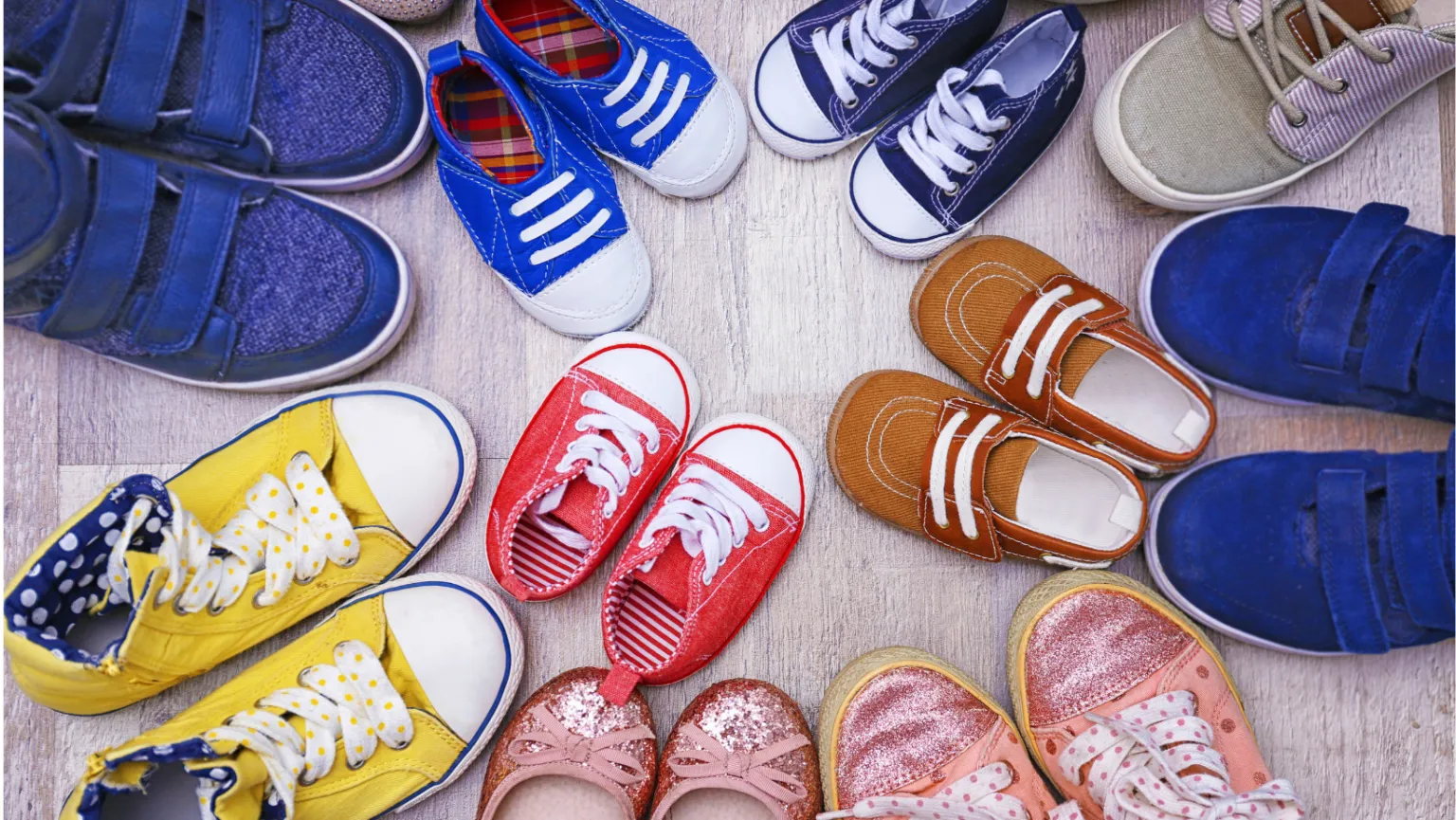Kids’ Sneakers – “What Do I get Them for Back to School?”
Back to School
Recommendations for Kids’ Shoes
Both Orthopedists and Podiatrists have weighed in on this subject, and we’ve combined their knowledge and our experience to help you determine what’s best for your child. Your child’s age corresponds to the type of shoe or sneaker they’ll need. For babies and toddlers we recommend they go without shoes or no-skid socks so they can use their toes when developing their balance reactions.
As kids enter preschool and elementary school, it’s important to understand what your child needs their shoes to provide. Children need to be able to protect and support their feet as they transition frequently from indoors to outdoors and navigate many types of surfaces.
A child’s shoe should have rubber soles with grooves for traction to prevent slipping and sliding. It should be lightweight and breathable. You want the shoe to provide support and stability help your child to balance and run efficiently. You don’t need to go with the trendiest or cutest shoe to accomplish this goal.
Support
It is best to have a sneaker that has arch support. Often, running shoes have a stiffer arch support that works for most kids.
The Arch area should be stiff and slightly elevated compared to the rest of the outer sole.
Run your hand along the inner sole of the shoe where the sole touches the side wall along the inner arch. If you feel some support there, then have your child try on these shoes. The brands that we recommend you consider include Asics, Tsukihoshi, and New Balance.
If your child has pain in the foot, has a flattened arch or if you are unsure which shoes to select, we can help! Come in for a $99 Screening, and we will assess your child’s foot shape and posture. We’ll make a recommendation for your child to have a proper fitting shoe.
Fit
To ensure the best possible fit, we recommend you follow these steps. Have your child stand up when trying their shoes on. First check the heel and make sure there is enough space to fit your pinky finger between your child’s heel and the heel of the shoe. Next, check the front and make sure there is a thumb-width space from the longest toe to the front of the shoe. Have your child wear socks while they are fitted to prepare for colder weather.
Lace or Velcro
Finally, determine what type of fastener makes the most sense. Fastener options often depend on the age and skill level of your child. Laces can be difficult for toddlers while Velcro fastening makes shoes easier to put on and take off. If your child is able to tie their laces, make sure the lace is long enough for a double knot to prevent your child from tripping.
At the end of the day, the best shoes for your child are ones that fit well and allow your child to be as independent as possible- forget about fashion! (If you can!) Some trendy shoes do fit this criteria but you may have to be a little flexible to get what you and your child want! Happy Shopping!





